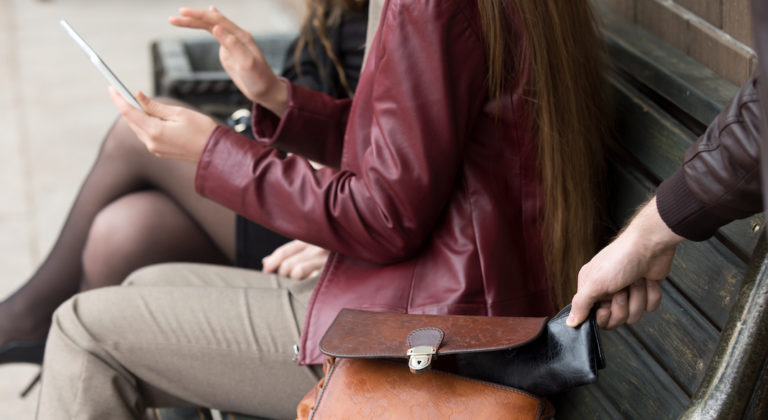Though Anne Hidalgo made her candidacy official to be re-elected mayor of Paris on Saturday, January 11 in an interview with Le Parisien, the outgoing mayor is making a series of speeches and proposals. After the development of the Porte de la Chapelle, the mayor, who has made sustainability her mantra, is proposing a city that is 100% cyclable thanks to new bike paths. “The idea is not that everyone should start cycling, but to ensure that bicycle traffic is pleasant and safe,” explains Emmanuel Grégoire, the mayoral candidate’s campaign director, who is also her first deputy. “There are still places in Paris where the public space is not suitable for cycling. The facilities date back to the time when the car was the preferred solution for transport.”
It has been announced that a total of 60 hectares of parking would be transformed into bicycle paths to work toward the 100% bikeable objective. This would amount to the elimination of 60,000 parking spaces. However, the first deputy states that “the decline in street parking spaces will continue, but it is not solely for the purpose of creating bicycle paths. Among other things, this will allow for the creation of green spaces.”
“One thing’s for sure: we’re not there yet”
In any case, according to a study carried out and published by the Atelier parisien d’urbanisme (Apur) in May 2019, in the capital, the number of available parking spaces on the roads and in parking lots is 621,600, but the household car fleet represents 462,700 vehicles. Nearly 150,000 spaces — the equivalent of 96 hectares (about 96 rugby pitches) — are left available, including 83,500 street parking spaces. Eliminating 60,000 parking spaces would therefore be feasible… But would this be enough to make Paris a 100% bikeable city? For the associations Paris en selle and Mieux se déplacer à bicyclette (MDB), the two major associations of Parisian cyclists, this would be a good start. But it would require other accompanying measures.
https://www.instagram.com/p/B5VKRWsCoDg/
“A city that is 100% bikeable is a city that allows all its inhabitants — whatever their age — to choose a bicycle for their daily journeys, i.e., to go to work, do their shopping, ride with their children, or even to get outside for some fresh air,” say Jean-Sébastien Catier, spokesperson for Paris en selle, and Alexis Frémeaux, President of MDB. One thing is certain: we’re not there yet. “Today, no parent wants to let their child go to school alone by bike,” says Frémeaux.
A cost of 250 million euros?
In concrete terms, for these two associations, a 100% cyclable Paris means creating a “vélopolitain” network. Like the metro, this new network would be made up of wide and continuous main roads reserved for cycling, to enable cyclists to move quickly from one point to another in the capital. “This represents 170 kilometers of uninterrupted and protected bicycle paths. About 15% of this network has already been developed,” says Catier. The cost? The two associations have estimated it at “250 million euros, which is the equivalent of the budget to build seven kilometers of tramway or two kilometers of metro.”
For Grégoire, the Vélopolitain, which includes the cycling plan started by the Paris City Council in 2015, is a very good idea. “This project, which consists of recreating the metro lines as a network of bicycle surface areas, is an interesting educational tool. It also has the merit of extending to the whole of the metropolis,” explains the first deputy.
But a cycling city is not just about wide bike lanes. “Parisians need small cycle lanes to pedal to their children’s school, to get to their office, to do their shopping or to get some fresh air. To do this, residential areas need to be calmed down by reducing car traffic. This requires changing the city’s traffic plan to prevent motorists from using residential streets as shortcuts,” explains Catier.
Increasing safety
The idea is not to ban cars, but to free neighborhoods from transit traffic. “This is a work that the city has already undertaken through construction and redevelopment and it is at the heart of the future pedestrianization program for the center of Paris announced by Anne Hidalgo,” emphasizes Grégoire.
But cyclists know it well: a city that is 100% cyclable also has easy and safe parking for bikes for everyone everywhere. This is not yet the case, by any measure: locking your bike is sometimes an impossible task. “We’ve increased the number of parking loops and launched an experiment with véloboxes, a secure shelter for storing your bike, but we see that this is not yet enough,” says the first deputy. “However, this is not our only responsibility. Some of our partners, such as the SNCF, will have to go much further in this area: there are not enough bicycle parking spaces at Paris stations. We need to create infinitely more.”
https://www.instagram.com/p/BxvFV58is6e/
A matter of political will
For their part, cycling associations are campaigning for all establishments open to the public (primary schools, middle schools, high schools, sports facilities, town halls and courts, etc.) to provide places to store bicycles. Finally, they insist that Paris will become the capital of cycling, following the example of Copenhagen — a city for which tourist guides state that there are more bicycles than inhabitants — if the capital no longer considers the bicycle as an adjustment variable. “To achieve this, the Vélib service must be further developed and people must learn to cycle from an early age, and this must be done at school,” Catier recommends.
The fact remains that today Paris en selle and MDB, which have set up a bicycle plan observation team, are optimistic. The two associations see a real turning point in the role of the bicycle in Paris, particularly thanks to the creation of protected bicycle paths such as on Rue de Rivoli. “Today, the bicycle has established its place among Parisian modes of transport, and it’s apparent,” confirms Frémeaux, before adding, “It’s a pity that the cycling plan was delayed, the improvements could have been more numerous and the work better phased and therefore less disparaged.” Result: for the advocates of cycling, making Paris a 100% cyclable city is quite conceivable by 2026. “In this area, it’s all a question of political will. And the good news is that no candidate is pushing an anti-bike message,” says Frémeaux.
This article was first published on Le Point.






